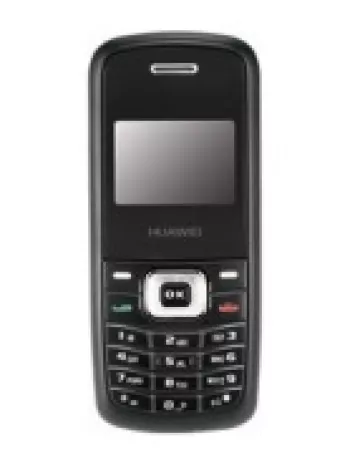
Introduction to Huawei Ascend Y300
The Huawei Ascend Y300 was a popular entry-level smartphone model released in March 2013. Known for its affordability and reasonable feature set for the time, it attracted a wide user base looking for functionality without breaking the bank.
Design and Build
With dimensions of 124.5 x 63.8 x 11.2 mm and weighing 130 grams, the Huawei Ascend Y300 was designed to be compact and easy to handle. It featured a classic design with a solid black or white exterior, offering a simple, yet elegant aesthetic. The phone used Mini-SIM, which was typical for devices of that era.
Display
The Ascend Y300 came equipped with a 4-inch IPS LCD touchscreen that offered a resolution of 480 x 800 pixels. This resulted in a pixel density of about 233 ppi, which was decent for viewing images and browsing the web. The screen was protected by scratch-resistant glass, helping to minimize damage from daily use.
Performance and Hardware
The smartphone was powered by the Qualcomm MSM8225 Snapdragon S4 Play chipset, coupled with a dual-core 1.0 GHz Cortex-A5 CPU and an Adreno 203 GPU. These components were modestly powerful, allowing for basic tasks and applications to run smoothly. However, the device wasn’t built for heavy multitasking or gaming.
Internal storage included 4GB with 512MB RAM, but users could expand storage via the microSDHC card slot. This made it easier for users to store more media and apps, up to a reasonable limit, considering the era it was released in.
Software
The Huawei Ascend Y300 ran on Android 4.1 Jelly Bean, a version that provided a stable and user-friendly interface. Jelly Bean brought features like Google Now and Project Butter, which enhanced the user experience with smoother graphics and transitions.
Camera
The device featured a 5 MP rear camera with autofocus and a single LED flash. While basic, it allowed users to capture satisfactory images for social media sharing. Video recording was possible at 480p@30fps. For selfies and video calls, there was a VGA front camera, which was very standard at the time.
Connectivity
On the connectivity front, the Ascend Y300 offered essential features such as Wi-Fi 802.11 b/g/n, DLNA support for streaming content, Bluetooth 2.1 with A2DP and EDR, GPS for navigation, and an FM radio. It also included a microUSB 2.0 port for charging and data transfer, but lacked NFC capabilities.
Battery Life
The device was powered by a removable Li-Ion 1730 mAh battery. It provided up to 5 hours of talk time and up to 320 hours of standby on both 2G and 3G networks. The removable aspect of the battery was beneficial as it allowed users to replace it easily if needed.
Additional Features
The Huawei Ascend Y300 included essential sensors such as an accelerometer and proximity sensor, enabling features like auto-rotate for the display and turning off the screen during calls to save battery.
Market Position and Price
Priced at about 90 EUR at launch, the Ascend Y300 was marketed as a budget-friendly option with a satisfactory feature set for its price range. Despite its eventual discontinuation, the Ascend Y300 was significant in establishing Huawei’s presence in the global smartphone market.
Conclusion
Overall, the Huawei Ascend Y300 presented a balanced offering for users looking for a basic smartphone experience. While it didn’t boast high-end specifications or features, it delivered dependable performance for everyday tasks and basic multimedia usage. Its affordability and practical design made it an attractive choice for many entry-level smartphone users during its time.
Key Features of Huawei Ascend Y300
- Network Technology: Supports GSM / HSPA
- Display: 4.0 inches IPS LCD with Scratch-resistant glass
- Operating System: Android 4.1 (Jelly Bean)
- Processor: Dual-core 1.0 GHz Cortex-A5
- Main Camera: 5 MP with LED flash
- Expandable Storage: microSDHC card slot available
- Battery: Removable Li-Ion 1730 mAh
- Connectivity: Wi-Fi, GPS, Bluetooth 2.1, FM Radio, MicroUSB 2.0
- Affordable Price: Approximately 90 EUR
- Available Colors: Black and White
Drawbacks of Huawei Ascend Y300
- Limited internal storage of 4GB, which may fill up quickly with apps and media.
- Only 512MB of RAM, potentially leading to slower performance and difficulty in handling multiple apps.
- Outdated Android version (4.1 Jelly Bean) with limited support for newer apps and features.
- Low-resolution display of 480 x 800 pixels, which may not provide a crisp and clear viewing experience.
- VGA front camera, offering poor image quality for selfies and video calls.
- No NFC support, which limits contactless payment options and connectivity features.
- Discontinued model, meaning no further updates or support from the manufacturer.
- Older Bluetooth version (2.1), which can result in slower and less reliable connections.
- Limited battery capacity (1730 mAh), which may not support prolonged usage without frequent recharging.
- Video recording only at 480p, resulting in lower quality video capture.



View Also
More Phones
All Rights Reserved +14268 Phones © Mobilawy 2025

























